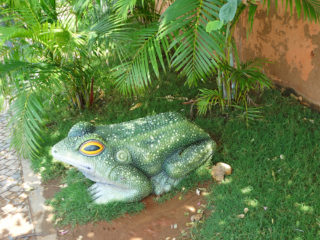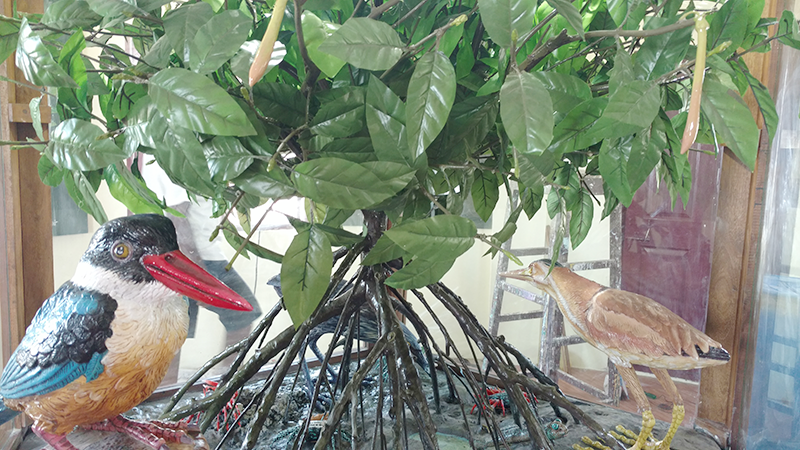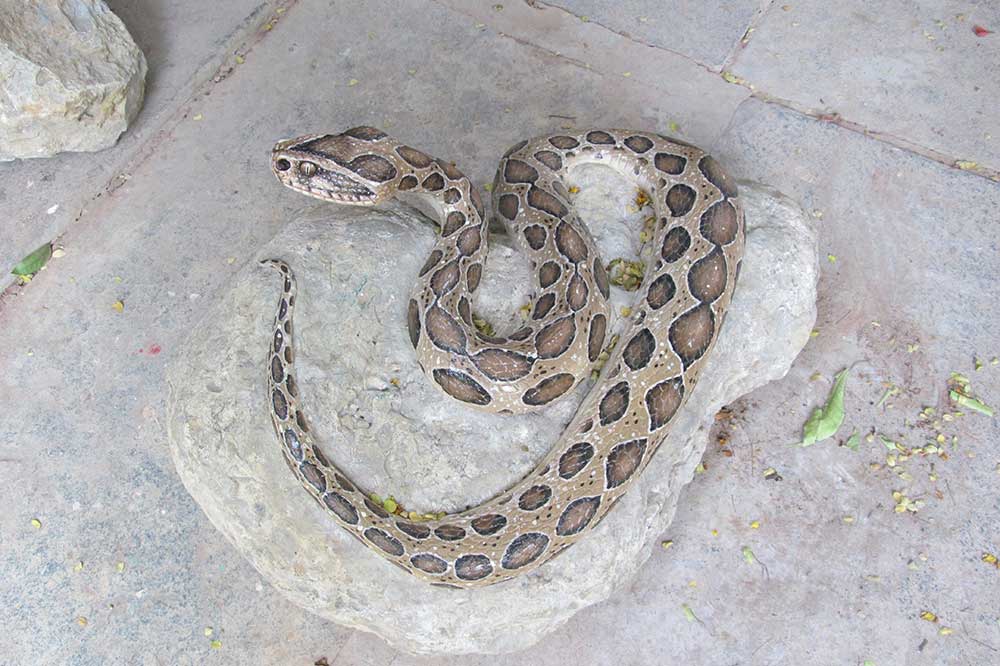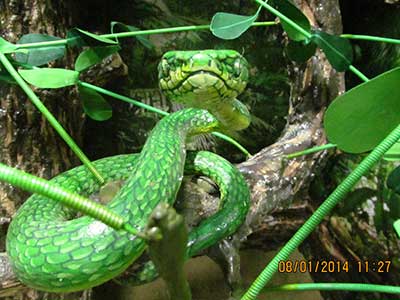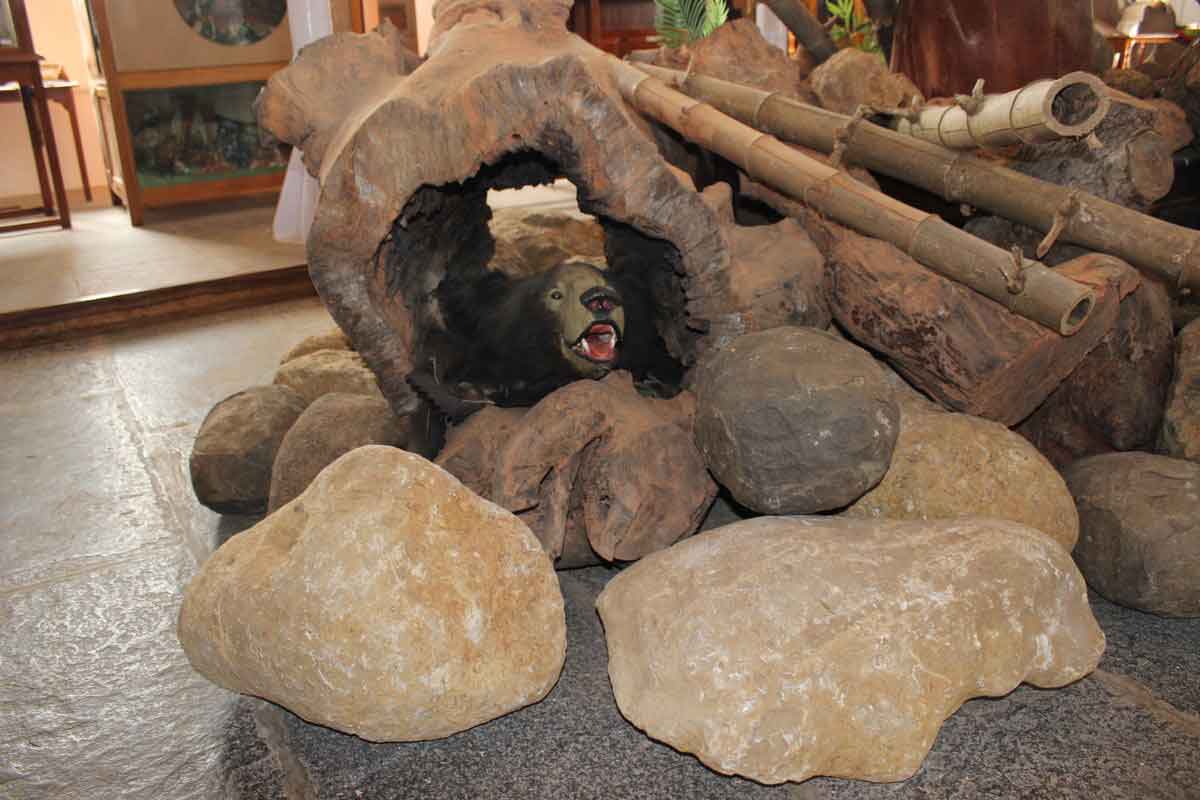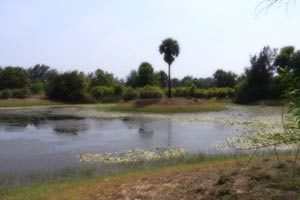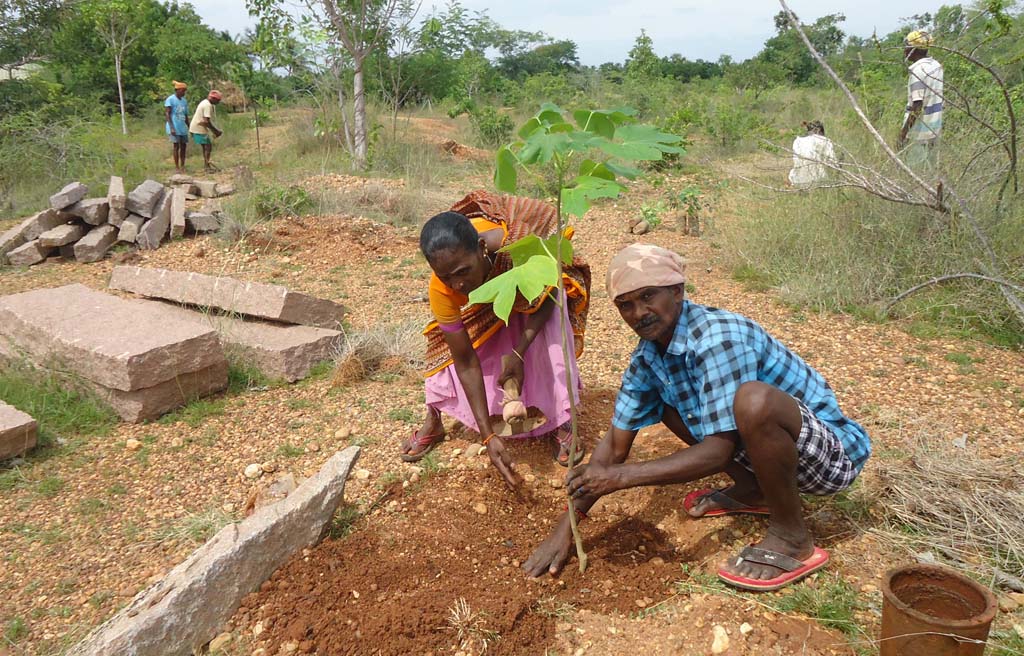Chetpet Eco Park, Chennai
This was a project initiated by the Fisheries Department of Tamil Nadu which PFC facilitated in the beginning. Later during the execution phase the contractor involved PFC to create sculptures of creatures in stone, ferrocement and metal.

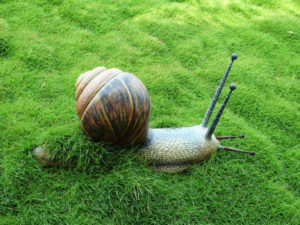
Pitchavarm Mangrove Forest
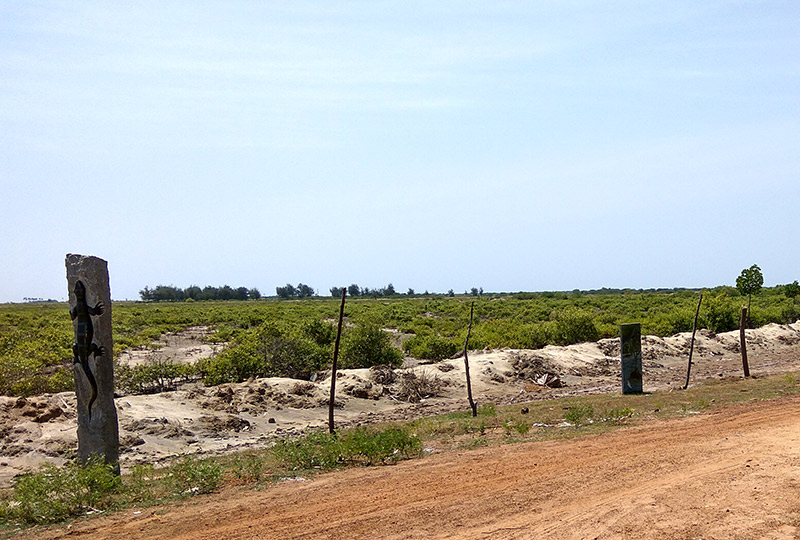 Home to one of India’s largest and most important mangrove ecosystems, Pichavaram in the Cuddalore district of Tamil Nadu has long mesmerised visitors with its spectacular maze of narrow waterways and overhanging mangroves.
Home to one of India’s largest and most important mangrove ecosystems, Pichavaram in the Cuddalore district of Tamil Nadu has long mesmerised visitors with its spectacular maze of narrow waterways and overhanging mangroves.
The art department at Pitchandikulam is delighted to have helped design and create an interpretation centre on the site, on commission from the Tamil Nadu Forest Department.
The project consisted of two parts:
- an interpretation centre, with over a dozen artworks and a permanent exhibition on the biodiversity of the mangrove ecosystem
- a nature trail aimed at schoolchildren and tourists with nine carved stone pillars and seven kadappu stone slabs with oil paintings and information on local birds, marine life and distinctive botanical features such as the Rhizophora species of mangrove trees.
Over a dozen artworks were made for the mangrove interpretation centre, including a beautiful sea turtle who now takes pride of place hanging from the ceiling, and a complex five foot painted sculpture of a rhizophora mangrove tree, complete with roots.
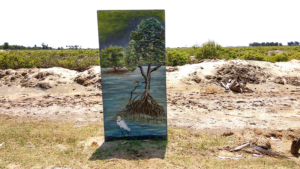
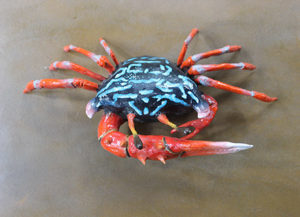

Department of Forests and Wildlife, Puducherry
This involved showcasing the four common venomous snakes of peninsular India (Spectacled Cobra, Indian Krait, Russell’s Viper and Saw-Scaled Viper) and their likeness for the education of the general public. We created life sized sculptures of nine snakes for an outdoor public space, in addition to interpretative signage.




Snake Park, Chennai
 This project involved the creation of life sized models of various snakes and lizards.The challenge was to be as taxonomically accurate as possible as the models had to undergo scrutiny by top herpetologists and other wildlife biologists. In addition the models had to depict life styles of the animals that one would not observe unless one spent considerable time observing them in the wild. This was one of Pitchandikulam’s most satisfying projects as it passed muster in both the strict scientific as well as the art fields.
This project involved the creation of life sized models of various snakes and lizards.The challenge was to be as taxonomically accurate as possible as the models had to undergo scrutiny by top herpetologists and other wildlife biologists. In addition the models had to depict life styles of the animals that one would not observe unless one spent considerable time observing them in the wild. This was one of Pitchandikulam’s most satisfying projects as it passed muster in both the strict scientific as well as the art fields.


Gass Forest Museum, Coimbatore

This is one of the oldest museums in the country. We were commissioned to refurbish the museum and give it a more aesthetically appealing look without compromising the existing collections in the museum. The work needed quite a bit of ingenuity and involved the creation of life-sized sculptures of large animals, interpretative signage, indoor landscaping, refurbishing of antique furniture and models, and the cleaning and remounting of the hundreds of animal trophies and skins contained in the collection.
The highlight of the exhibition space is a three dimensional diorama, approximately 25m x 3m, of a rocky forest landscape complete with sculptures of a tiger, a family of lion-tailed macaques, an Indian python swallowing a spotted deer, a king cobra, and a ficus tree amongst many other minor items. A stuffed gaur (Indian bison), presented by the Maharaja of Mysore, and a few other fully stuffed specimens were also used to give a realistic feel to the exhibition.
There’s a good article from the Hindu on the reopening of the museum here.




Chennai’s eco spots
Congested with people, vehicles and buildings, Chennai gasps for breath. But it still has some green areas that allow people to take in fresh air and even spot wild life. Geeta Padmanabhan writes
In an exploding city with an ever increasing population, , where construction is a major activity, vehicles have right of passage, sidewalks have no space for walkers and garbage rules road space, it’s a miracle there are green areas that allow one to breathe some fresh air. They are real, outdoor, semi-wildernesses, within city limits. Know them? Here is a guide to a Chennai eco-spot-hopping.
At Adyar Poonga, Preston Ahimaz of Pichandikulam Forest Consultants (then), offers a lec-dem on “eco-spot”. “It’s where the ecology of the land is allowed to function, relatively undisturbed,” he says. Animals and plants complement one another, balancing the local ecology. When you remove what is there and bring in what is not , the system collapses. “ Leave things alone, protect the green areas and promote them where feasible. Nature is resilient and dynamic; it balances itself,” he adds.
To Read more
Joss Brooks and the Adyar Poonga

Joss Brooks, who through his brand of restoration ecology, has given a city dump an unimaginable makeover. Geeta Padmanabhan on the making of the Adyar Poonga.
Joss Brooks is a man difficult to catch up with. It was raining, but he walks up and down the restored mounds and the new “cottages” of Adyar Poonga, explaining the toil behind the transformation. I want the sun shining — on his past. “The story is about you,” I tell him. . He agrees. Reluctantly.
Eco-Village Design Program (EDE)
The Global Ecovillage Network (GEN) Auroville desk based in Pitchandikulam Forest has just successfully hosted a 5 week Ecovillage Design Education Course running from 4th December 2016 to 7th January 2017!
Please follow the link for a quick info
Mugaiyur Eco-park

In 2006 Pitchandikulam began the transformation of an eroded, overgrazed 88 acre site at Mugaiyur into a thriving Eco-park. The natural coastal sand dune ecosystem has been restored and a Tropical Dry Evergreen Forest (TDEF) established to create a matrix of habitats that can support a greater range of wildlife.
Eric Ramanujam: Principal Investigator (Faunistics)
M. Eric Ramanujam has been a wildlife illustrator and owl researcher for nearly two decades. Since 1997 he has been involved in full time conservation and has undertaken wildlife surveys in the Kazhuveli region and Adyar wetland complex. His main sphere of interest is the natural history of the Indian Eagle Owl Bubo bengalensis. He heads the design and art studios in Pitchandikulam.
Selected articles include:
